- Home
- Alison Weir
Katherine Swynford Page 5
Katherine Swynford Read online
Page 5
By May 1355, as has been noted, Katherine's brother, Walter de Roët, had joined the Black Prince's household as a yeoman of the Chamber. This was a brilliant opportunity for a young man, as the Prince enjoyed an international reputation as a chivalric hero and warrior that was second to none. He was 'the comfort of England', 'the flower of chivalry of all the world', and 'for as long as he lived and flourished, his good fortune in battle, like that of a second Hector, was feared by all races'. Already, at twenty-five, he was a legend.
Born in 1330, the sixteen-year-old Edward of Woodstock had won his spurs in 1346 at the Battle of Crecy, in which he 'magnificently performed' astounding feats of arms. He was 'fair, lusty and well-formed', brave, intelligent, charismatic and inspirational. His sixteenth-century nickname - it is not known to have been used earlier - probably derived from the black armour he is said to have worn, but it could equally well have described his vicious and much-feared temper. He could be — it has to be said - impatient, arrogant, and capable of great cruelty.
The Prince's household provided an environment in which any aspiring young man would have been gratified to be placed. He spent lavishly on his residences, notably his palace at Kennington in Surrey, and lived in great splendour and luxury. He loved tournaments, hunting, gambling and women, and fathered at least four bastards. His admiring contemporaries, whose priorities were those of the fourteenth century and not the twenty-first, regarded him as the epitome of knighthood.
Before 9 May 1355, the Black Prince arranged for two of his retainers, Walter de Roët and Sir Eustace d'Aubrecicourt, to deliver letters to his aunt, the Countess Margaret, in Hainault, and to one of her clerks, Stephen Maulyons, provost of the church of Mons. Maulyons owed the Prince £40, but Edward ordered him to divide it equally and pay it 'as a gift' to Walter and Sir Eustace; £10 was a munificent sum - today it would be worth ,£7,800 - so Walter was clearly highly regarded by his employer. The Prince gave Walter forty shillings (about £780) for his travelling expenses on 10 May, so either a long trip was anticipated — you could never be sure how long a Channel crossing might take — or Walter was to travel in some comfort. By September, Walter had returned from his mission, for that month he accompanied the Black Prince, now King's Lieutenant in Aquitaine, on a military expedition to the Duchy, and he may well have fought under the Prince in 1356 when Edward won a great victory over the French at the Battle of Poitiers and captured John II, King of France himself, thus further enhancing his dazzling reputation. It is possible that Walter was killed at Poitiers, because no more is heard of him. In 1411, Katherine's son, Sir Thomas Swynford, laid claim to lands in Hainault that he had inherited from his mother on her death in 1403; had Walter de Roët been alive in 1403, those lands would have passed to him, not to the heirs of his sisters.
It is often claimed that Philippa de Roët was placed by the Queen in the household of her daughter-in-law, the Countess of Ulster, around August 1355. Elizabeth de Burgh, Countess of Ulster in her own right and a former ward of the Queen, was then twenty-three, and had been married to the King's second surviving son, the blond giant Lionel of Antwerp, since 1342, he taking the title Earl of Ulster in her right. There was indeed a girl called Philippa in the Countess's service at this time, and she had perhaps been engaged to help care for her mistress's first and only child, yet another Philippa, who was born on 16 August 1355 at Eltham Palace in Kent. This girl's name was Philippa Pan.
For a long while, historians did entertain doubts as to whether Philippa Pan was Philippa de Roët. These doubts arose from the use of the abbreviated name 'Philippa Pan.' in the fragmentary accounts that survive for the Countess's household. On 24 July 1356, a payment was made for the making of trimmings for the clothes of 'Philippa Pan.'; the following year, the Countess paid 2s.6d (£37) 'for the fashioning of one tunic' for her, and in December 1357, gave a serving boy 12d (£15) to escort Philippa Pan. from a place called 'Pullesdone' to Hatfield in Yorkshire, where Earl Lionel and his wife were to keep Christmas. In April 1358, the Countess Elizabeth presented Philippa Pan with a bodice and some furs to wear at the great feast given to mark St George's Day. This is the last mention of Philippa Pan in the accounts, which come to an abrupt end in November 1359.
In recent years, several historians have subscribed to the theory that Pan. stands for 'Philippa, Paon de Roët's daughter', or 'Philippa, Panetto's daughter', Panetto being the name by which Paon de Roët was familiarly known at court; this theory seems rather far-fetched and contrived, especially since the Christian names of women in royal households were almost invariably accompanied by their surnames in accounts, registers and official documents. So the 'evidence' connecting Philippa Pan with the Roëts is slender indeed.
Who was she, then? It was at one time thought that Pan was short for panetaria, or Mistress of the Pantry, but it was virtually unheard of for such a post to be held by a woman, and there is no other instance of the word panetaria being thus abbreviated. Besides, a woman serving as Mistress of the Pantry would never be provided with fun by her mistress.
Pan. is probably an abbreviation for a surname, and the most convincing theory is that this Philippa was the daughter or kinswoman of a London mercer, William de la Panetrie (who died between 1349 and 1367), who lived in Soper Lane at the east end of Cheapside, in the parish of St Pancras.The Panetries were acquainted with the prosperous Chaucer family, who lived nearby in Thames Street in the Vintry Ward, and who had managed to place a son in the Countess Elizabeth's household; this son was a highly gifted youth who was not only to become famous in his own right, but would also play an important part in the lives of Philippa de Roët and Katherine Swynfbrd. His name was Geoffrey Chaucer, he had been born probably between 1339 and 1346, and he is renowned today as one of the greatest English poets who ever lived. Finding Philippa Pan in the same household as Geoffrey Chaucer lends weight to the theory that she was a Panetrie by birth, and that she had perhaps obtained her place by recommendation. As for her link with 'Pullesdone' — a place that cannot conclusively be identified — she could have been performing an official errand for her mistress, visiting relatives prior to Christmas, or accompanying a family member on business there; London merchants had far-flung interests.
Geoffrey Chaucer was the son of a rich and influential London vintner, and he is first recorded as a page in the household of the Countess Elizabeth on 4 April 1357, when she purchased shoes, black and red breeches and one of those short, revealing jackets called a 'paltock' (to which hose and sleeves could be attached) for 'Galfridus Chaucer' of London. The following month, she gave him two shillings (£30). He is last mentioned in these accounts in December, when he was present at the Christmas gathering at Hatfield and received a grant of 3s.6d (£52) for necessities.
From 1357 to 1359, Chaucer appears to have served Lionel of Antwerp, possibly as a page. In 1359, having received arms and become a squire — he was never knighted — he served in Edward Ill's army against the French, and was captured at the siege of Rheims.The King himself paid his considerable ransom of £16 (£5,489) — which must demonstrate the high regard in which he was already held by the royal family — and he was freed by October 1360, when he brought a letter to England from Lionel of Antwerp, who was at that time in Calais. Chaucer then disappears from the historical record for six years. There has been much learned speculation about what happened to him during this period: that he was perhaps studying at Oxford (as his son Lewis later did) or Cambridge, or at the Inner Temple, a theory suggested by his signing himself 'attorney' in the 1390s — his writings reveal that he had a good knowledge of the law. Chaucer may have transferred to John of Gaunt's household, although there is no record of this, yet he was certainly on familiar terms with John of Gaunt by 1368, and John did later award him a life annuity. What is likeliest is that when Lionel of Antwerp went to Ireland to serve as the King's Lieutenant there in September 1361, taking his wife and daughter with him, Geoffrey Chaucer went with them. Lionel was created Duke of Clarence in 1362.
Tragically, Elizabeth de Burgh died in Dublin on 10 December 1363.
Geoffrey Chaucer possibly returned to England in 1364, perhaps as a member of the party who were escorting little Philippa of Clarence to her grandmother's household, where she would be brought up. It may have been on his return that he entered upon a period of study at university or the Inns of Court. It is possible too that he was sponsored by a member of the royal family, possibly John of Gaunt, who is known to have maintained several students at Oxford.67
So if Philippa de Roët was not the Philippa Pan recorded in the Countess of Ulster's household in 1356-8, where was she? The likeliest place was the Queen's own household, and the probability is that she was brought up there with her sister; by 1366, she had been appointed a damoiselle of the Queen's Chamber, where her duties would increasingly have involved nursing her ailing mistress: after a riding accident in 1360, in which she possibly suffered internal injuries that were never treated, Queen Philippa's health declined, and her enforced immobility caused her legs to swell, which her contemporaries diagnosed as 'dropsy'.
By 1366, Katherine de Roët had left the Queen's household; it may have been as early as 1360 that she was placed by Philippa in the chamber of the latter's daughter-in-law, Blanche, Duchess of Lancaster, Katherine's former playmate, now the wife of John of Gaunt. And within two to three years of joining the Duchess's establishment, Katherine was probably married to Sir Hugh Swynford, one of John of Gaunt's knights.
2
'The Magnificent Lord'
During her childhood, Katherine had benefited from the tutelage and example of Queen Philippa; now she was to come under the admirable influence of another great lady, the new Duchess of Lancaster, who was about eight years her senior and one of her former companions in the Queen's household.
The exquisite Blanche of Lancaster was the daughter of the King's cousin, the 'valiant' and 'well-respected' Henry of Grosmont, Duke of Lancaster.1 While Edward III was the grandson of Edward I, Duke Henry was the grandson of Edward I's younger brother, Edmund Crouchback, who had been created Earl of Lancaster in 1267 and died in 1296. Earl Edmund's eldest son, Thomas, Earl of Lancaster, had been executed for treason in 1322 by Edward II, but his younger brother, blind Henry, had been restored to the earldom two years later. Duke Henry was the latter's son. He had succeeded his father as Earl of Lancaster in 1345, and been created Duke in 1351, the second man in the realm ever to be raised to ducal rank, the first being the Black Prince, who had been created Duke of Cornwall in 1337.
Henry of Grosmont, who could have doubled for Chaucer's 'perfect, gentle knight', was the greatest nobleman in the kingdom. Not only was he Duke of Lancaster, but also Earl of Derby, Earl of Leicester, Earl of Lincoln, and Lord of Beaufort and Nogent in France. Consequently, his landed interests were vast. He was the greatest of the magnates, an experienced and masterly general, and utterly loyal to the King, who thought very highly of him and treated him as a valued friend. The Duke was a tall and imposing figure, genial and suave. He liked the fine things in life: good food and wine, luxurious and tasteful surroundings, and the robust charms of common women. Yet he was also temperate, pious and charitable, the founder of many religious houses, churches and hospitals.
Henry's duchess was Isabella de Beaumont; sadly, they had no son to succeed to his great inheritance. Instead, there were two daughters, Matilda and Blanche. Matilda of Lancaster had probably been born in 1340; after a brief first marriage, to Ralph de Stafford, which saw her widowed by the age of ten, she had been married in 1352 in the King's Chapel at Westminster to William, Duke of Bavaria, who became Count of Holland in 1354 and Count of Hainault in 1356, on the death of his mother, the Countess Margaret; he was the son with whom the Countess had been briefly at war prior to this marriage, and it had been on his account that she had fled to England in 1351, bringing Paon de Roët with her.
After their wedding, Matilda went to Hainault to live with her husband, but in 1357 the insanity that was to render William incapable of ruling became alarmingly evident, and there were unfounded rumours attributing his madness to an attempt to poison him while he was in England. By 1358, he was being kept in confinement at The Hague, and later he was moved to the fortress of Quesnoy, where he remained shut up until his death thirty-one years later.’ There were no children born of his marriage to Matilda.
Blanche of Lancaster, the younger of Duke Henry's daughters, had probably been born on 25 March 1342. She spent some of her formative years at court in the care of Queen Philippa, and came to know the royal family well. As we have seen, Katherine and Philippa de Roët were among her younger companions.
Edward III, needing to provide for his rapidly expanding family, was vigorously pursuing his successful policy of marrying his sons to English heiresses, and so consolidating his own interests and binding nobles and Crown closer together. Blanche was the greatest unmarried heiress in England, and Edward was determined to marry her to his third surviving son, John of Gaunt, and secure for John her share of the rich Lancaster patrimony. On 7 June 1358, the King petitioned Pope Innocent VI for a dispensation allowing the young couple to wed — they were within the forbidden degrees of consanguinity — which was granted on 8 January I359.
It was in honour of the memory of 'Blanche the Fair' that Geoffrey Chaucer later wrote his dream poem, The Boke of the Duchesse.7 Allusions in the text make this clear: Chaucer uses the word 'Duchess' in the tide, and there was only one duchess in England at the time; he makes a play on Blanche's name, calling her 'my Lady White', or 'good, fair White'; and he refers to 'a long castle' (Lancaster), St John (the Duke's name-saint) and 'a rich mount' (a pun for Richmond, John's earldom). The context of the poem will be discussed in Chapter 4, but it contains a eulogistic description of Blanche, whom Chaucer calls 'the flower of English womanhood':
'Gay and glad she was, fresh and sportive, sweet, simple [i.e. straight-forward] and of humble semblance, the fair lady whom men call Blanche.'
Chaucer's description reveals that, like her father, Blanche was intelligent, well-mannered, self-controlled and moderate in behaviour, 'not too grave and not too gay'. Her speech was 'low-toned and gentle', friendly and eloquent, and her character 'inclined to good'. She was no flatterer, but was truthful, 'devoid of malice' and never voiced a criticism. Happy and carefree in her demeanour, she was 'like a torch so bright that everyone could take its light’. Froissart echoes Chaucer's praise of Blanche, calling her 'gay, sociable, gentle, of humble semblance' and above all 'good'.
There is a corbel head that is said to be Blanche at Edington Priory in Wiltshire, and a statue of a girl holding a pet monkey, whom some have identified as her, on Queen Philippa's tomb in Westminster Abbey, but these are in no sense portraits; nor can we glean any idea of what she looked like from drawings of her tomb effigy, because the effigy depicted is not the original that was sculpted in the fourteenth century. So it is to Chaucer that we must turn for a detailed description of Blanche. Her hair, he says, was 'glittering golden', her eyes 'gentle and good, steadfast yet glad, not set too wide'. She did not 'shyly glance aside', but gazed openly with a 'candid mien' that was 'free of artfulness' and in no way wanton. Here, one suspects, was a young woman who knew her own worth, for although her look 'made men smart' with desire, she affected not to notice: 'well she guarded her good name'. Her lovely face was 'pink and white, fresh, lively-hued, [the] highest example of Nature's work'; her neck was graceful, her shoulders lovely, her breasts rounded, her skin unblemished. She was tall and straight-backed, with 'well-broad' hips, and her arms and legs were 'well-clothed in flesh', suggesting a degree of plumpness that was fashionable in the fourteenth century.
It has often been asserted that Chaucer's Boke of the Duchesse is not intended as a realistic portrayal of Blanche; undoubtedly, the poem was conceived as a dream sequence, and it was inspired by several well-known works: those of Ovid and Froissart, the popular mediaeval romance poem, Le Roman de la Rose, and the innovative verse of the avant-garde Fren
ch writer and composer, Guillaume de Machaut Yet although Chaucer's laudatory and idealised description of Blanche conforms to the literary conventions of the age, it does convey an impression of a real person. After all, this poem would have been circulated at court and amongst the Duke's circle, so its portrayal of Blanche and her relationship with John of Gaunt would have had to be recognisable and convincing to those who had known her well. And Blanche may well have been lucky enough to have had the kind of looks that were fashionable in that period. Furthermore, Chaucer himself was a member of the royal household when he wrote the poem; he knew John of Gaunt and the rest of the royal family. So what he wrote must to a degree have been drawn from life.
John of Gaunt had been born probably in March (certainly by 28 May) 1340 at St Bavon's Abbey in Ghent, Flanders9 — hence his appellation, 'Gaunt' being an English corruption of'Ghent'. He was always to demonstrate a sense of affiliation with the country of his birth, and with Hainault, his mother's birthplace. This affinity might partly explain why he would be attracted to Katherine Swynford, herself a Hainaulter.
His early years had been spent in the care of a nurse, Isolda Newman, under the supervision of his mother, Queen Philippa. 'The Lord John' was created Earl of Richmond on 20 November 1342, the King himself solemnly girding the two-year-old child with the sword of his earldom, which had been held by the Dukes of Brittany since the Norman Conquest, and was vacant on account of the death of the last Duke, whose infant heir had been passed over." This earldom brought young John an income of 2,000 marks (£303,882) per annum. At the age of three, with his father and his elder brothers, he was accepted into the confraternity of Lincoln Cathedral, thus forging the first of his close links and attachment to Lincoln, its cathedral chapter" and the social orbit of the Swynford family.

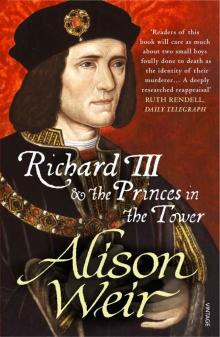 Richard III and the Princes in the Tower
Richard III and the Princes in the Tower Britain's Royal Families: The Complete Genealogy
Britain's Royal Families: The Complete Genealogy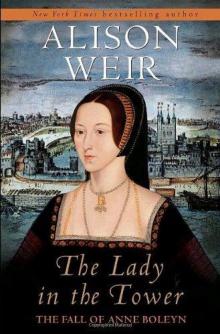 The Lady in the Tower: The Fall of Anne Boleyn
The Lady in the Tower: The Fall of Anne Boleyn Six Wives of Henry VIII
Six Wives of Henry VIII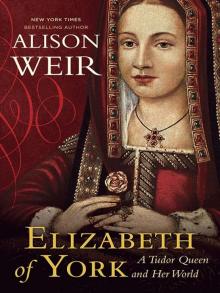 Elizabeth of York: A Tudor Queen and Her World
Elizabeth of York: A Tudor Queen and Her World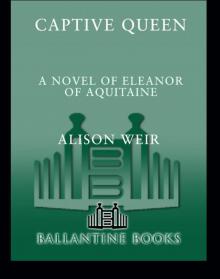 Captive Queen
Captive Queen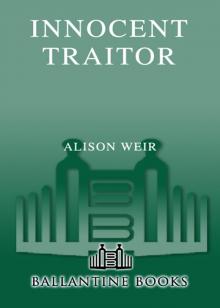 Innocent Traitor
Innocent Traitor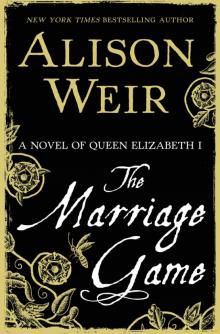 The Marriage Game
The Marriage Game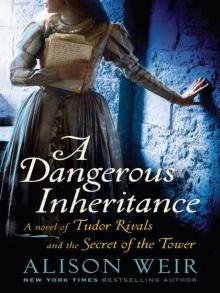 A Dangerous Inheritance
A Dangerous Inheritance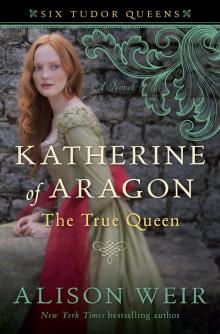 Katherine of Aragón: The True Queen
Katherine of Aragón: The True Queen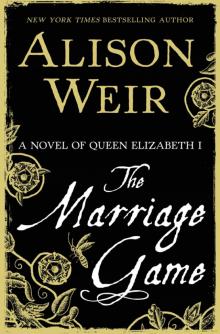 The Marriage Game: A Novel of Queen Elizabeth I
The Marriage Game: A Novel of Queen Elizabeth I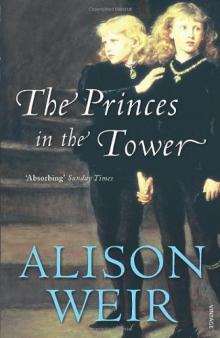 Princes in the Tower
Princes in the Tower Anne Boleyn: A King's Obsession
Anne Boleyn: A King's Obsession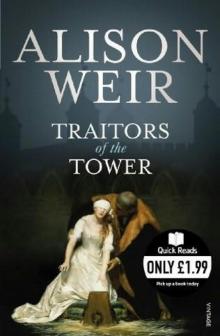 Traitors of the Tower
Traitors of the Tower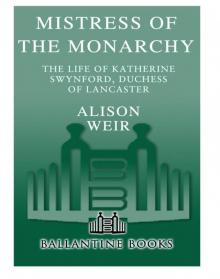 Mistress of the Monarchy: The Life of Katherine Swynford, Duchess of Lancaster
Mistress of the Monarchy: The Life of Katherine Swynford, Duchess of Lancaster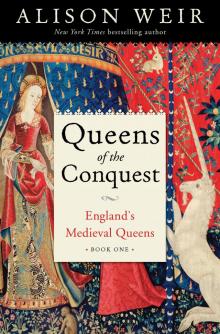 Queens of the Conquest: England’s Medieval Queens
Queens of the Conquest: England’s Medieval Queens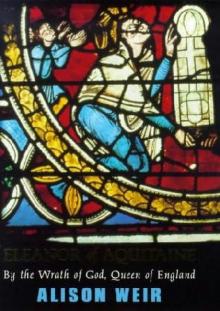 Eleanor of Aquitaine: A Life
Eleanor of Aquitaine: A Life Mary, Queen of Scots, and the Murder of Lord Darnley
Mary, Queen of Scots, and the Murder of Lord Darnley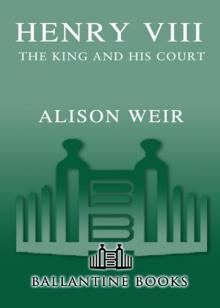 Henry VIII: The King and His Court
Henry VIII: The King and His Court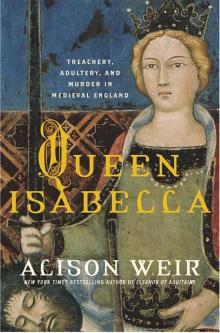 Queen Isabella: Treachery, Adultery, and Murder in Medieval England
Queen Isabella: Treachery, Adultery, and Murder in Medieval England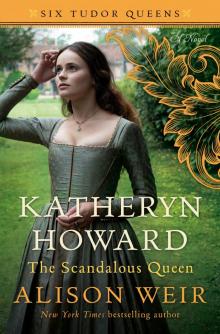 Katheryn Howard, the Scandalous Queen
Katheryn Howard, the Scandalous Queen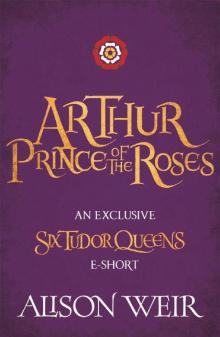 Arthur- Prince of the Roses
Arthur- Prince of the Roses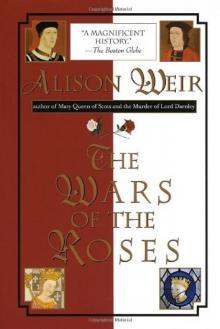 The Wars of the Roses
The Wars of the Roses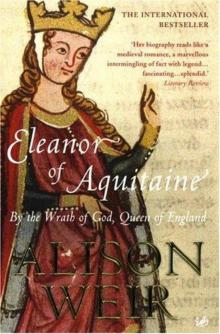 Eleanor of Aquitaine: By the Wrath of God, Queen of England
Eleanor of Aquitaine: By the Wrath of God, Queen of England Mary Boleyn: The Great and Infamous Whore
Mary Boleyn: The Great and Infamous Whore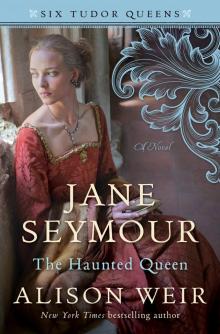 Jane Seymour: The Haunted Queen
Jane Seymour: The Haunted Queen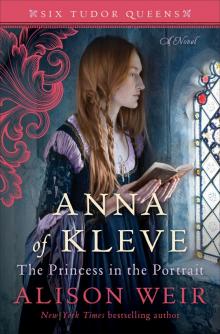 Anna of Kleve, the Princess in the Portrait
Anna of Kleve, the Princess in the Portrait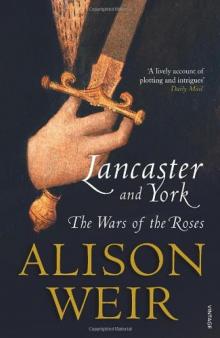 Lancaster and York: The Wars of the Roses
Lancaster and York: The Wars of the Roses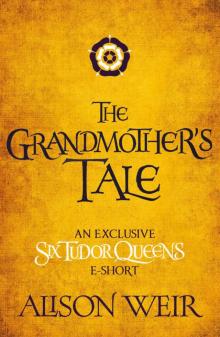 The Grandmother's Tale
The Grandmother's Tale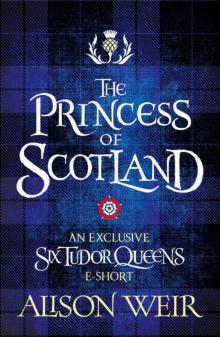 The Princess of Scotland (Six Tudor Queens #5.5)
The Princess of Scotland (Six Tudor Queens #5.5)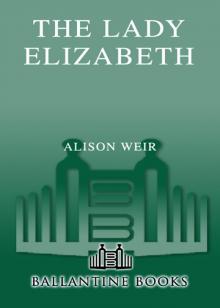 The Lady Elizabeth
The Lady Elizabeth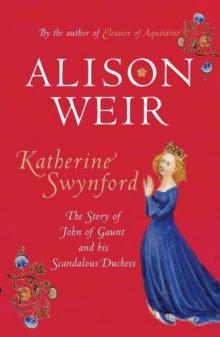 Katherine Swynford: The Story of John of Gaunt and His Scandalous Duchess
Katherine Swynford: The Story of John of Gaunt and His Scandalous Duchess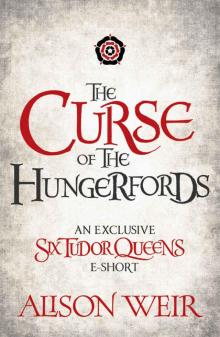 The Curse of the Hungerfords
The Curse of the Hungerfords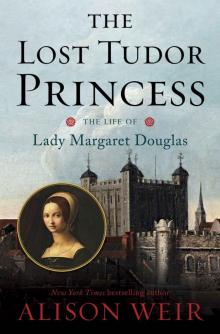 The Lost Tudor Princess: The Life of Lady Margaret Douglas
The Lost Tudor Princess: The Life of Lady Margaret Douglas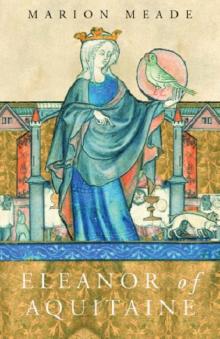 Eleanor of Aquitaine
Eleanor of Aquitaine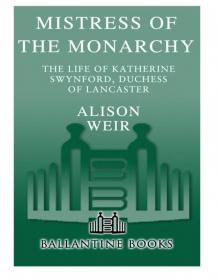 Mistress of the Monarchy
Mistress of the Monarchy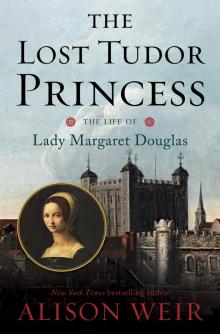 The Lost Tudor Princess
The Lost Tudor Princess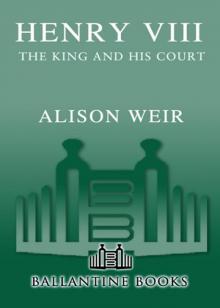 Henry VIII
Henry VIII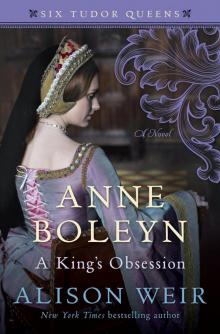 Anne Boleyn, a King's Obsession
Anne Boleyn, a King's Obsession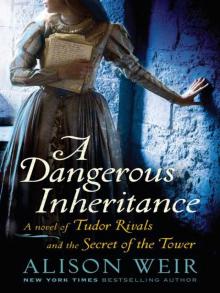 A Dangerous Inheritance: A Novel of Tudor Rivals and the Secret of the Tower
A Dangerous Inheritance: A Novel of Tudor Rivals and the Secret of the Tower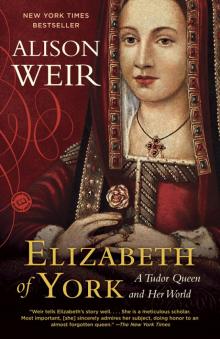 Elizabeth of York
Elizabeth of York Katherine of Aragon, the True Queen
Katherine of Aragon, the True Queen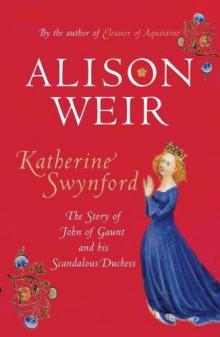 Katherine Swynford
Katherine Swynford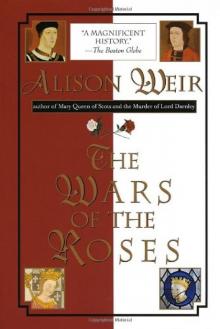 Wars of the Roses
Wars of the Roses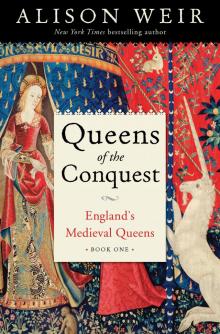 Queens of the Conquest
Queens of the Conquest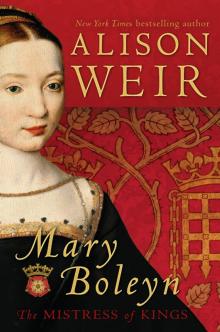 Mary Boleyn
Mary Boleyn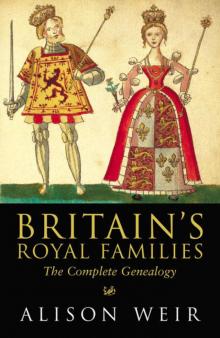 Britain's Royal Families
Britain's Royal Families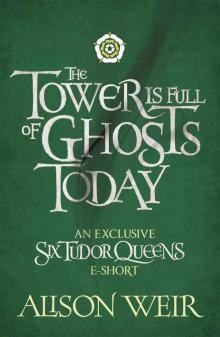 The Tower Is Full of Ghosts Today
The Tower Is Full of Ghosts Today Life of Elizabeth I
Life of Elizabeth I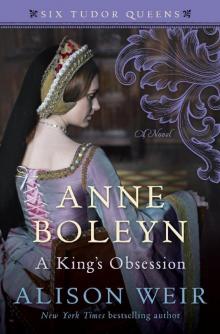 Anne Boleyn A King's Obssession
Anne Boleyn A King's Obssession Lancaster and York
Lancaster and York Jane Seymour, the Haunted Queen
Jane Seymour, the Haunted Queen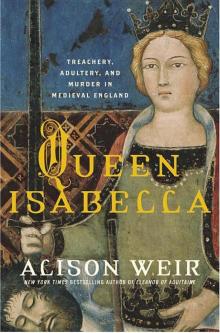 Queen Isabella
Queen Isabella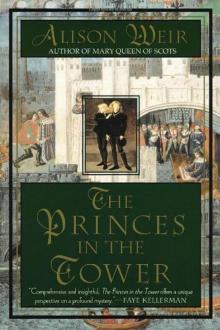 The princes in the tower
The princes in the tower